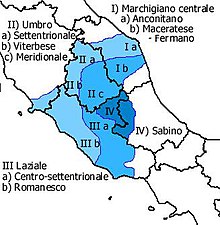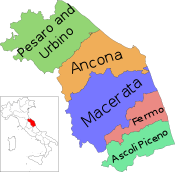
Corsican is a Romance language constituted by the complex of the Italo-Romance dialects spoken on the Mediterranean island of Corsica (France) and on the northern end of the island of Sardinia (Italy). Corsican is closely related to the Tuscan varieties from the Italian peninsula, and therefore to the Florentine-based standard Italian.

Italian is a Romance language of the Indo-European language family that evolved from the Vulgar Latin of the Roman Empire. Italian is credited as the most direct descendant of Latin, being the closest to it among the national languages and the least divergent from it together with Sardinian when regional and minority languages are also taken into account. Italian is an official language in Italy, Switzerland, San Marino, and Vatican City. It has an official minority status in western Istria.

Sassarese is an Italo-Dalmatian language and transitional variety between Sardinian and Corsican. It is regarded as a Corso–Sardinian language because of Sassari's historic ties with Tuscany and geographical proximity to Corsica. Despite the robust Sardinian influences, it still keeps its Corsican roots, which closely relate it to Gallurese; the latter is linguistically considered a Corsican dialect despite its geographical location, although this claim is a matter of controversy. It has several similarities to Italian and in particular the old Italian dialects from Tuscany.

Venetian or Venetan is a Romance language spoken by Venetians in the northeast of Italy, mostly in the Veneto region of Italy, where most of the five million inhabitants can understand it, centered in and around Venice, which carries the prestige dialect. It is sometimes spoken and often well understood outside Veneto, in Trentino, Friuli, the Julian March, Istria, and some towns of Slovenia and Dalmatia (Croatia) by a surviving autochthonous Venetian population, and Brazil, Argentina, Australia, Canada, the United States, the United Kingdom, and Mexico by Venetians in the diaspora.

Neapolitan is a Romance language of the Italo-Dalmatian group spoken across much of mainland Southern Italy, except for southern Calabria and southern Apulia, and spoken in a small part of central Italy. It is named after the Kingdom of Naples that once covered most of the area, of which the city of Naples was the capital. On October 14, 2008, a law by the Region of Campania stated that Neapolitan was to be protected.

Verdicchio is a white Italian wine grape variety grown primarily in the Marche region of central Italy. The name Verdicchio derives from verde and refers to the slight green/yellow hue that wines made from the grape can have.
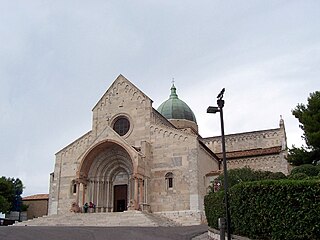
The Archdiocese of Ancona–Osimo is a joint ecclesiastical territory and metropolitan see of the Catholic Church in the Marche region of Italy.

Tuscan is a set of Italo-Dalmatian varieties of Romance mainly spoken in Tuscany, Italy.
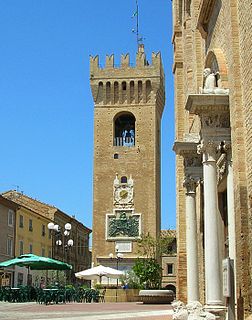
Recanati is a town and comune in the Province of Macerata, in the Marche region of Italy. Recanati was founded around 1150 AD from three pre-existing castles. In 1290 it proclaimed itself an independent republic and, in the 15th century, was famous for its international fair. In March 1798 it was conquered by Napoleon Bonaparte.

The Diocese of Macerata-Tolentino-Recanati-Cingoli-Treia is a Roman Catholic diocese in Italy. It is a suffragan of the Archdiocese of Fermo.

The Diocese of Recanati was a Roman Catholic diocese in Italy. It was founded in 1240 by Pope Gregory IX.
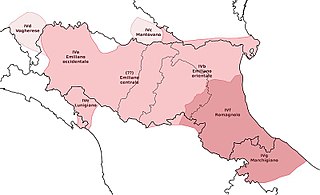
Romagnol dialects (rumagnòl) are a group of closely-related dialects spoken in the historical region of Romagna, which is now in the south-eastern part of Emilia-Romagna, Italy. The name is derived from the Lombard name for the region, Romania. Romagnol is also spoken outside the region, particularly in the Provincia di Pesaro e Urbino and in the independent country of San Marino. It is classified as an endangered language because older generations have "neglected to pass on the dialect as a native tongue to the next generation".

Ancona railway station, sometimes called Ancona Centrale, is the main railway station of Ancona, Region of Marché. It is the most important station of the region and is owned by the Ferrovie dello Stato (FS), Italy's state-owned railway company.
The Italo-Dalmatian languages, or Central Romance languages, are a group of Romance languages spoken in Italy, Corsica (France), and formerly in Dalmatia (Croatia).
Banca Adriatica S.p.A. trading as UBI Banca Adriatica and formerly known as Nuova Banca delle Marche S.p.A. was an Italian bank based in Jesi, Marche region. It has operations in several regions in central Italy, but concentrated in Marche region, which 73% of the branches were located in that region as of 2016. The bank was formed on 22 November 2015 by the spin off of the good assets of the original Banca delle Marche S.p.A..
Cassa di Risparmio di Fermo S.p.A. (Carifermo) is an Italian savings bank based in Fermo, Marche region.
Associazione di Fondazioni e di Casse di Risparmio S.p.A. is an Italian banking association. The members were the savings banks of Italy, or the foundation that originate from the reform trigger by Legge Amato.

La Festa della Venuta della Santa Casa, colloquially known as La Venuta is a traditional festival in the Marche region of Italy, also widespread in some parts of Umbria, which has been held for more than four hundred years on the night between the ninth and tenth of December, lighting large bonfires in cities, towns and the countryside.
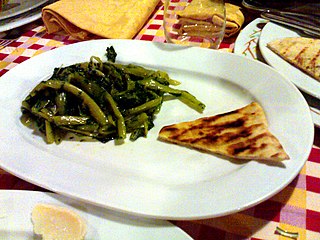
Crescia[ˈkreʃʃa] is a thin Italian flatbread typically prepared in Marche and Umbria. The crescia probably has a common ancestry to the piadina, to be found in the bread used by the Byzantine army, stationed for centuries in Romagna, in the north of the Marche (Pentapolis), and in the Umbrian Valley crossed by the Via Flaminia. The food is also known by the common name of "white pizza".
